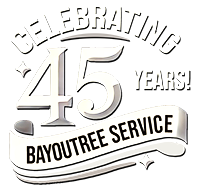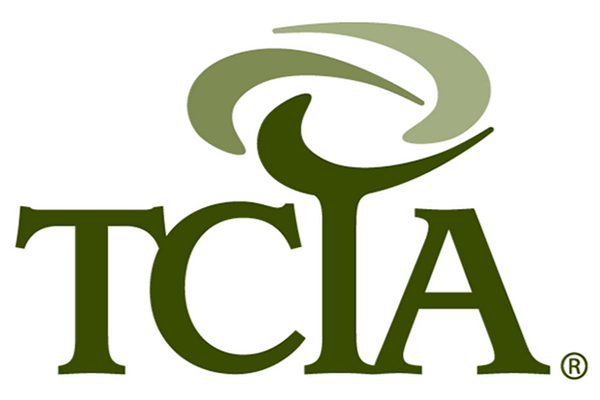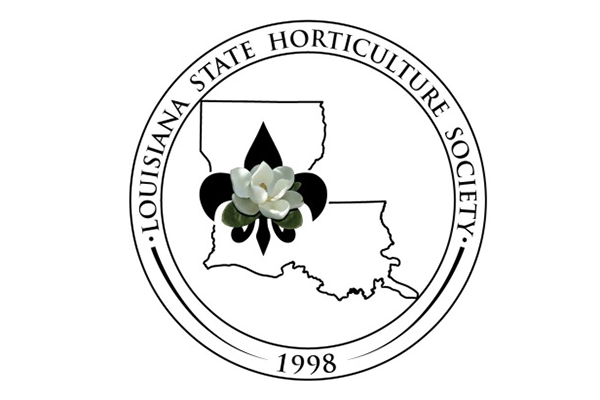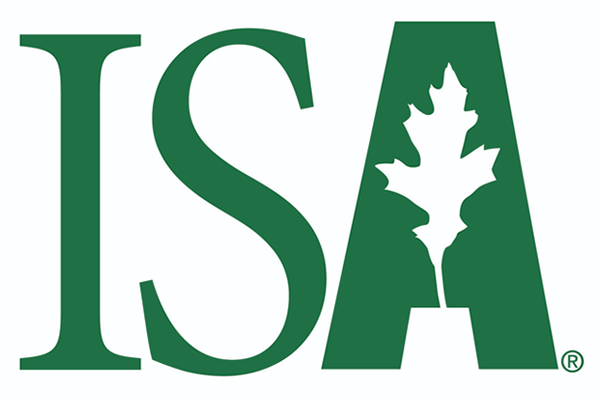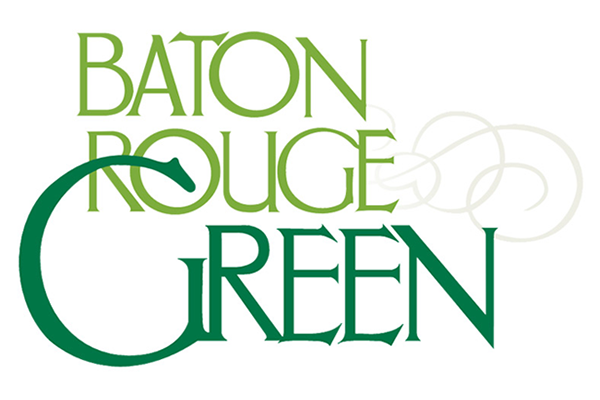Japanese maple trees (Acer palmatum and close cousins A. japonicum, A. shirasawanum) are prized worldwide for their lace-like foliage, fiery fall color, and sculptural branching. Yet gardeners often assume these beauties can't thrive in Louisiana's heat, humidity, and clay soils.
Bayou Tree Service helps homeowners grow healthy Japanese maples. They focus on proper placement, soil preparation, and seasonal care. We can do the same for you, from New Orleans to Baton Rouge.
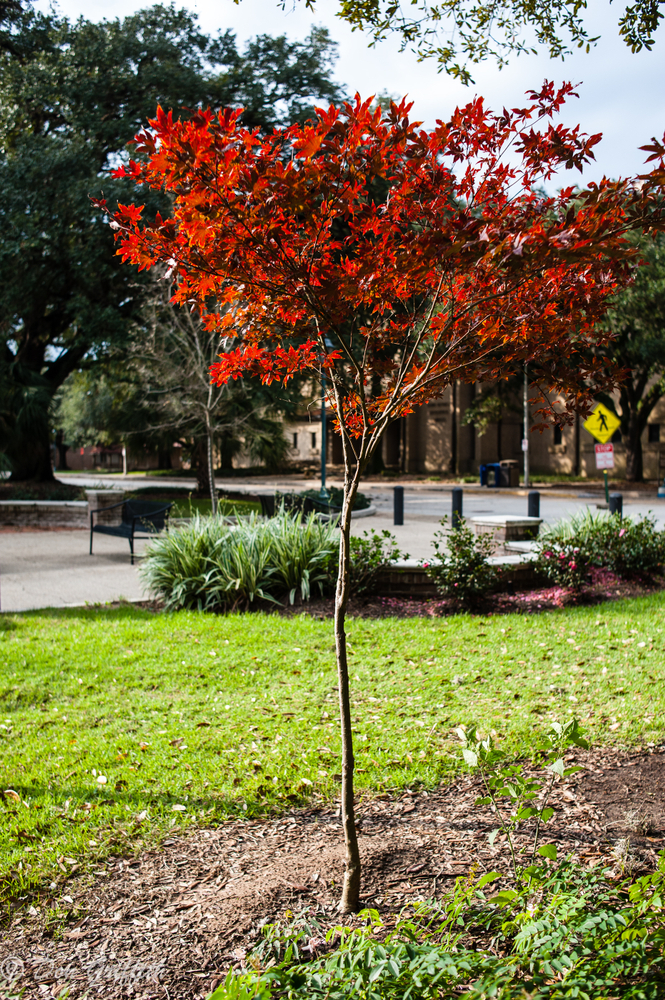
Why Japanese Maples Are Special in Louisiana Landscapes
Japanese maples fill design niches that other small trees simply can't:
- Four-season interest. Soft spring greens, deep summer reds, blazing autumn oranges, and winter silhouettes.
- Compact size. Most cultivars mature at 12–18 feet—perfect for courtyards, poolsides, and shaded understories.
- Shade tolerance. Morning sun and afternoon shade match many Gulf Coast lots better than full-sun crape myrtles.
- Low canopy clearance. Fine branching casts dappled shade without shutting out light to understory plantings.
Popular Japanese Maple Varieties for the Gulf South
| 'Bloodgood' | Deep burgundy, turns scarlet in fall | 15–20 ft upright | Anchor specimen or courtyard focal point |
| 'Tamukeyama' | Laceleaf, crimson to maroon | 8–10 ft cascading | Raised planters & waterfall edges |
| 'Sango-kaku' (Coral Bark) | Light green leaves; coral-red winter stems | 18–22 ft upright vase | Winter interest near patios |
| 'Seiryu' | Rare upright laceleaf, lime-green to gold | 12–16 ft narrow | Small urban lots & path accents |
| 'Shishigashira' (Lion's Head) | Crinkled dark-green leaves, gold fall tones | 10–15 ft compact | Container or formal garden punctuation |
Japanese Maple Planting Guide for Southern Landscapes
Planting a Japanese maple in Louisiana is both an art and a science. It is art because the tree's shape should match your home and garden. It is science.
Our hot summers, clay soils, and heavy rain create different conditions. These conditions are different from the cooler climates where maples grew.
Before you dig a hole, take a moment to plan. Think about sunlight, drainage, and microclimate. These three factors will decide if your new tree will just survive or really thrive. Our arborists follow the sequence below on every installation, and you can, too.
-
Choosing the Right Location
A good site solves 80 % of future problems. Look for:
- Morning sun, afternoon shade. East or northeast exposure shields leaves from brutal 3 p.m. heat.
- Well-drained soil. Avoid low spots that pond after storms; raised beds are ideal for heavy clay.
- Wind protection. Fencerows or larger trees buffer drying Gulf breezes that crisp tender foliage.
- Room to spread. Keep at least 6 feet from foundations and 10 feet below overhead lines.
2. Soil Preparation
Japanese maples prefer slightly acidic (pH 5.5–6.5), loamy soils rich in organic matter. Before planting:
- Test pH. LSU AgCenter kits are inexpensive and accurate.
- Amend clay. Blend 3–4 inches of pine-bark fines, aged compost, and coarse sand into the top 18 inches.
- Improve drainage. In soggy yards, mound soil 8–12 inches above grade to create a berm.
3. Planting Step-by-Step
Once you've pinpointed the perfect site and prepared the soil, it's time to set the tree in the ground. A Japanese maple's shallow, fibrous roots demand careful handling; planting too deep or compacting the backfill are the two most common reasons young specimens struggle in Louisiana yards.
Follow this precise sequence to give your maple a healthy head start:
- Dig wide, not deep. Hole width = 2-3 × root-ball diameter; depth = same height as root ball.
- Set high. Top of root flare should sit 1 inch above surrounding soil.
- Backfill & water-in. Use native soil mix; tamp lightly; soak thoroughly to eliminate air pockets.
- Mulch. 2-inch layer of pine needles or leaf mold keeps roots cool—keep mulch 3 inches away from trunk.
Seasonal Japanese Maple Tree Care Calendar
A Japanese maple’s needs shift with Louisiana’s distinct wet springs, steamy summers, and occasionally unpredictable cold snaps. By tailoring your maintenance routine to each season, you’ll keep foliage vibrant, root systems healthy, and structural form intact year-round.
Use the calendar below as a quick reference; pair it with local weather alerts for best results, and remember that newly planted trees may require a bit more attention than mature specimens.
| Season | Key Tasks | Bayou Tree Pro Tip |
| Spring (Feb–Apr) | • Light structural pruning • Slow-release 5-3-2 organic fertilizer • Check irrigation emitters |
Finish pruning before buds break to avoid sap bleed. |
| Summer (May–Aug) | • Deep water every 7–10 days in drought • Inspect leaves for scorch or pests • Refresh mulch |
Install a temporary shade cloth if heat index >105 °F during first two years. |
| Fall (Sept–Nov) | • Enjoy color! • Remove deadwood after leaf drop • Light compost top-dressing |
Moderate nitrogen avoids late flushes that winterkill. |
| Winter (Dec–Jan) | • Major shaping cuts (if needed) • Apply dormant horticultural oil for scale insects |
Never prune during hard freezes; wait for a 48-hour thaw window. |
How to Prune a Japanese Maple (Without Losing Its Natural Grace)
Pruning a Japanese maple is not just about shaping the tree. It is more about showing the beautiful structure hidden under its leaves.
The goal is to improve the tree’s natural shape. This includes thinning crowded twigs for better airflow, showing off layered branches, and removing any problem wood. We want to avoid harsh cuts that can cause disease or change the tree’s unique look.
Because Japanese maples grow slowly and respond best to light, deliberate trimming, every snip should serve a clear purpose. Follow the guidelines below to keep your maple healthy, balanced, and beautiful for decades.
When to Prune
Late winter, from January to early February, is the best time in Louisiana. During this period, sap flow is low. New growth heals quickly when spring warmth arrives.
Tools You’ll Need
- Bypass hand pruners (sterilized with 70 % alcohol)
- Fine-tooth pruning saw for branches > ¾ inch
- Folding pole pruner for upper canopy (optional)
Step-by-Step Technique
- Stand back first. Identify the tree’s natural layered structure.
- Remove dead, diseased, or crossing wood. Cut flush to the branch collar—no stubs.
- Thin for airflow. In dense areas, take out no more than 10 % of live twigs per season.
- Shorten drooping tips. On laceleaf cultivars, lift edges off the ground to showcase cascading form.
- Avoid topping! Cutting back to random internodes ruins the silhouette and invites dieback.
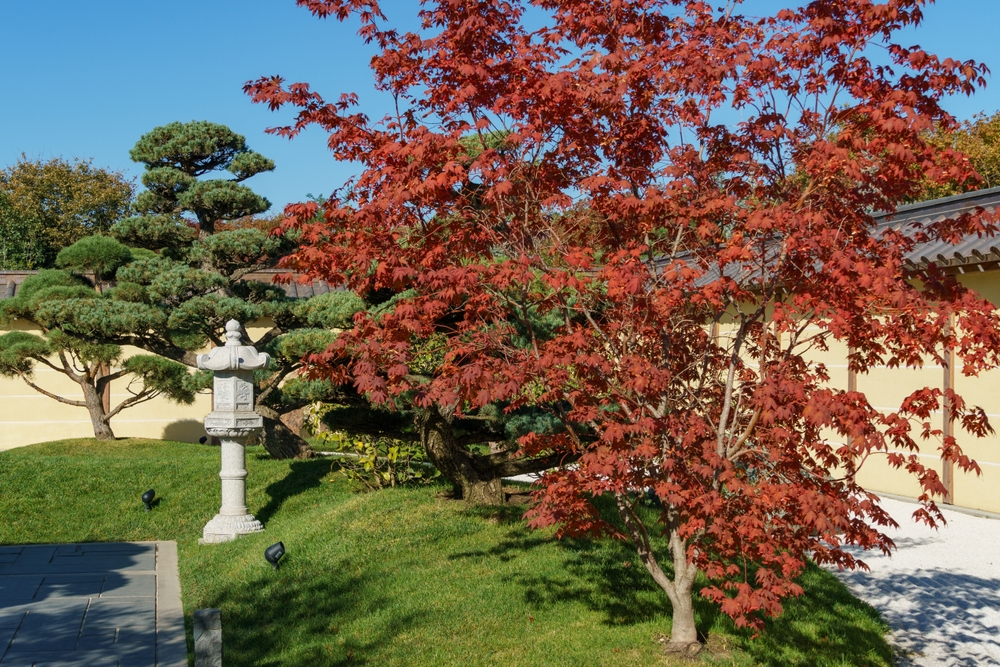
Common Issues & How to Prevent Them
Even when planted in the right spot and cared for thoughtfully, Japanese maples can still encounter a few predictable challenges—particularly in Louisiana's humid climate. Spotting early warning signs and acting quickly keeps minor annoyances from turning into costly problems.
The table below lists the troubles our arborists see most often, the symptoms you'll notice first, and the proven remedies that restore tree health without unnecessary chemicals.
| Problem | Symptoms | Prevention / Treatment |
| Leaf Scorch | Brown tips/edges mid-summer | Afternoon shade, 2-inch mulch, consistent moisture |
| Aphids & Scale | Sticky leaf surfaces, sooty mold | Predatory ladybugs, dormant oil spray, systemic imidacloprid (as last resort) |
| Verticillium Wilt | Sudden branch dieback, olive-green streaks in sapwood | Avoid waterlogged soils; prune out infected limbs; severe cases require removal |
| Root Rot (Phytophthora) | Declining vigor, yellow leaves | Raised beds, well-drained soil, fungicide drench if caught early |
Japanese Maple Tree FAQs
Why Homeowners Trust Bayou Tree With Their Japanese Maples
Choosing, planting, and caring for a Japanese maple in Louisiana's special climate is a long-term investment. It pays off with careful attention and local knowledge.
For over forty years, Bayou Tree Service has built a reputation for treating each tree like a work of art. They combine science-based tree care with a strong sense of beauty. Here are the qualities that set our team apart:
- ISA-Certified Arborists. Our team includes degreed horticulturists who understand the microclimates of South Louisiana.
- 40 Years of Local Experience. From Uptown courtyards to Northshore estates, we know which cultivars thrive where.
- White-Glove Installation. Root-ball inspection, mycorrhizal inoculation, and after-plant watering schedules come standard.
- Long-Term Care Plans. Annual health checks, targeted fertilization, and precision pruning keep your investment flourishing.
